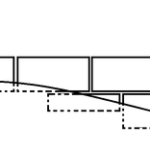If you’re one of those people caught riding the fence between using your favorite standard camera and the new digital camera you have sitting around, it’s time to climb down off your mount. Unless you’re one of the rare people who makes a living snapping photos or you do almost exclusively very artsy types of photography, your standard film camera may not offer you anywhere near as many advantages as even a lower-end digital camera of today.
But, whether you realize it or not, the failure to move to almost exclusive use of your digital camera is costing you – and the environment around you – in far more ways than one. Actually, the list of differences between the two platforms can go on for pages, but let’s tackle the ones apt to make the most positive difference to you.
1. The cost of film – and the limited number of pictures possible per roll – often limit the number of shots you take. Think about it: how many times have you missed a great scene just because you wanted to save room for more pictures later? The same holds true for film processing; we avoid taking all the pictures we could because we don’t want to make the costs to develop our vacation pictures cost more than the trip itself.
2. Related to the first issue, many cameras let you take anywhere from 30 to 100 shots before you either have to transfer the images into your computer or change your Flash or other storage medium card. Also, it’s usually much faster and easier to change the card than it is to insert a new roll of 35 mm film.
3. Film only lasts so long. While we often try to be prepared by keeping an extra roll or two in our bags, we may not realize that extremes of heat or cold – or other less than ideal situational factors – have made the film and the pictures we take with it sub-par. Plus we have no idea how long a roll of film has been sitting on a store shelf when we buy it. Sure, the film usually has a date on the package, but if we rarely check that date when buying food, what’s the chance we’ll double-check it before we use the film?
4. If your big excuse for not moving entirely to digital is that you know such a camera eats batteries faster than a chocoholic can consume her way through a Ghiradelli shop, think rechargeable. Good quality rechargeable batteries and a proper recharger are much less expensive than they were a few years ago and can save you a fortune (as much as a $100 per month per household).
5. It’s much easier, as well as more cost efficient, to store a huge volume of digital images than it is to store developed photographs. Your recordable CD or DVD drive can become your best friend for archiving your photos or making a quick album you can share with friends and family.
6. Without having to worry about the cost of film, you can experiment with your photography to your heart’s content. This will help you develop your talent far faster than being nickel and dimed having to process bad shots taken with a standard camera.
7. Software available for use with your camera – including third party commercial packages like Microsoft Digital Image – let you do some very interesting alterations to your photos. You can retouch, enhance, crop, rotate, and add special effects at the click of a mouse.
8. Even more inexpensive digital cameras offer corrective features like red eye reduction and auto focus that you normally have to become skilled to overcome with a standard camera. Many also automatically adjust for light levels better than standard cameras can.
9. Film-produced photos can age rapidly; colors fade and the image can crack. Even storage of negatives can be a problem. But a digital image you can all up and reprint again and again.
10. Not only is the cost of film development quite expensive, the chemicals used are toxic. All too frequently, these toxins end up in waterways or pollute the ground water. Use rechargeable batteries with a digital camera, however, and the environment will (practically) thank you.
And the final bonus? You can just delete your really bad shots. No one ever has to see them or gets the opportunity to tease you about them. That’s a great plus all by itself.



